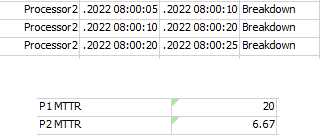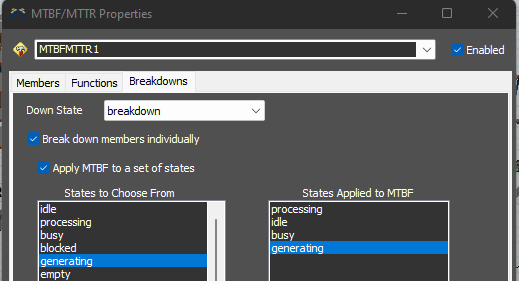I'm wondering how exactly MTBF/MTTR functions behave when combined. Let's use a simple example of 1 processor which is allocated to two different MTBF/MTTR functions. Are both functions running independently of each other? Is the MTBF "clock" of one function stopped during a breakdown caused by the other?
I ran a simple experiment with 2 processors and two identically defined MTBFMTTR functions. Function 1 is applied to processor 1 and 2 independently. Function 2 is applied to only processor 2. MTBF is defined as an exponential distribution and MTTR as a gamma distribution.
To analyze the results I used the state gantt chart to define a performance measure based on the average breakdown time.
I expected the resulting MTTR for processor 2 to be either the same as processor 1 or slightly higher as failures might overlap. However, to my surprise MTTR for processor 2 are consistently lower than for processor 1.
Is that result of the MTBF/MTTR functions? Or does the gantt chart in case of overlapping breakdowns count them individually? This could explain how the second breakdown cuts short the accounted duration of the first breakdown.





